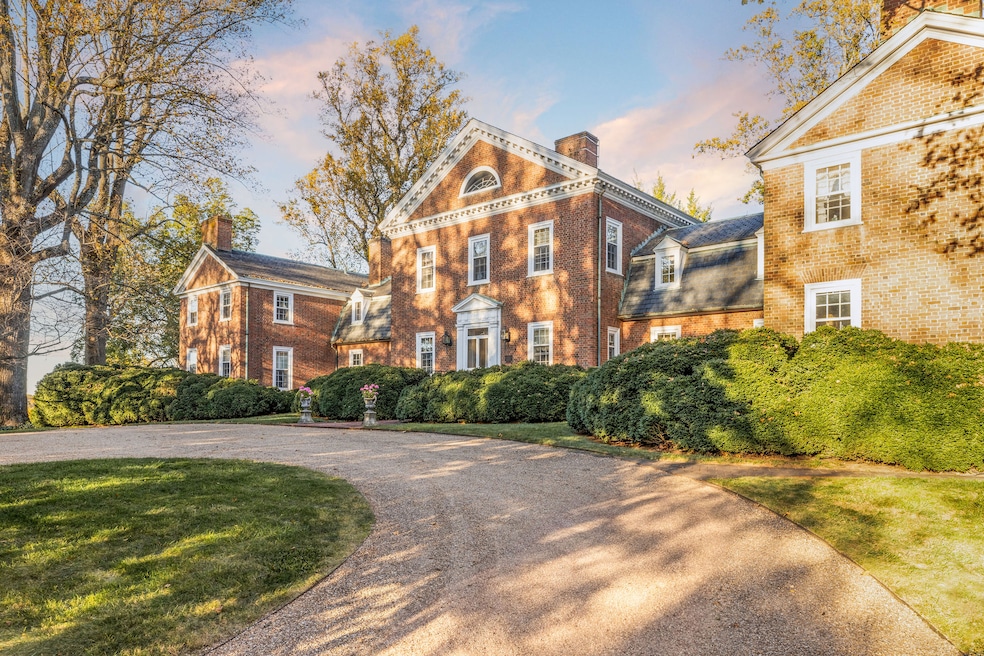About two decades after he helped establish one of the leading purveyors of luxury real estate, Charles and Mary Lou Seilheimer bought a high-end property for themselves in the heart of Virginia’s Piedmont.
Charles, the former president of Sotheby’s International Realty, didn’t just live on the 77 acres that make up Mount Sharon in Orange County. He immersed himself in the region’s lifestyle, serving as horse racing chair for the Montpelier Hunt Races on President James Madison’s nearby estate. He also became a strong advocate for protecting land in the area from development, Murdoch Matheson, who recently listed Mount Sharon for Frank Hardy Sotheby’s International Realty, told Homes.com. Meanwhile, Mary Lou worked with a landscape architect to design an elaborate 10-acre garden behind the main house on the property.
The more than 10,000-square-foot Georgian-style house, with its eight bedrooms, nine fireplaces, carefully maintained garden and surrounding agricultural landscape, evokes a lifestyle that would have been common among the Virginia gentry at one time but might turn off some homebuyers today looking for something more manageable or contemporary.

“It’s of a different era, and a lot of modern-age buyers feel they’d never be able to manage it. But that doesn’t mean people shouldn’t want to live in that style,” Matheson said. “They definitely can.”
Matheson listed the property for $7.9 million. He has offered to sell the buyer an additional 147 acres next door that come with a large equestrian barn, for $1.25 million. The 77 acres also include a late 19th-century, two-story farm manager’s house and another residence built around the same time as the main house where Seilheimer has kept an office. The 147 acres have a conservation easement designed to prevent them from being developed, though there is no similar deed restriction on the 77 acres.

The main house, built in 1937, replaced an 1888 home, also called Mount Sharon. The only element of the original construction to survive is two brick posts at the property entrance. But there are also mature trees around the house, some of which date to the late 1700s, according to a 2013 nomination form for the property’s inclusion on the National Register of Historic Places.
Louis Bancel LaFarge, the architect of the main house, was known for being one of the “Monuments officers” who worked for General Dwight D. Eisenhower during World War II and was tasked with rescuing damaged, threatened and looted works of art in Europe, according to the nomination form.

The house is “like a bank vault, it’s incredibly well-built,” Matheson said. On the first floor, the builders laid oak flooring over pine to keep floorboards from moving, according to the National Register nomination. The document also highlights LaFarge’s craftsmanship; for instance, he designed distinctive mantels for each fireplace.
The Seilheimers have hosted numerous fundraising and garden club events at their property and brought together family members for gatherings, Matheson said. The house’s warmth is enticing, he said, especially on a brisk fall day when a fire is going in the living room.
“One thing that is so cool about the house is, you walk in from the front steps, through the vestibule, and there’s a fireplace right in front of you,” he said.
Charles Stick, a Virginia landscape architect, designed the Italian, French and English-style garden after the Seilheimers bought the property in 1995.
“Gardens were her passion,” Matheson said of Mary Lou.

